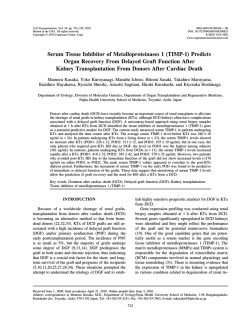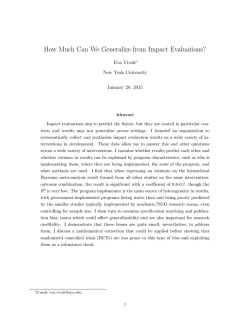
Download - journal of evolution of medical and dental sciences
DOI: 10.14260/jemds/2015/224 ORIGINAL ARTICLE A STUDY OF ORAL MAGNESIUM SUPPLEMENTATION IN PATIENTS WITH ESSENTIAL HYPERTENSION D. Annapurna1, P. Sujatha2, J. Sudha3 HOW TO CITE THIS ARTICLE: D. Annapurna, P. Sujatha, J. Sudha. “A Study of Oral Magnesium Supplementation in Patients with Essential Hypertension”. Journal of Evolution of Medical and Dental Sciences 2015; Vol. 4, Issue 10, February 02; Page: 1591-1597, DOI: 10.14260/jemds/2015/224 ABSTRACT: BACKGROUND AND OBJECTIVES: Knowledge of the association between magnesium (Mg) and hypertension is almost a century old. But controversial reports are available regarding the effect of oral Mg supplementation on Bp and lipid profile hence the present study aims to evaluate serum Mg levels and to assess the effect of oral Mg supplementation on lipid profile and Blood Pressure (BP) in patients with essential hypertension who were maintained on Atenolol. MATERIALS & METHODS: This study involved 80 subjects out of which 40 were patients of essential hypertension (aged 30-60 years) of either sex, maintained on Atenolol, 40 were age and sex matched non hypertensive controls. After performing the baseline investigations, hypertensive patients and controls were supplemented with 600mg of magnesium oxide (Mgo) in three divided doses daily for a period of 8 weeks and investigated for BP, serum Mg and lipid profile at the end of 8 weeks. RESULTS: The incidence of hypomagnesemia is more in study group and oral supplementation of 600 mg of Mgo daily resulted in a significant elevation of mean serum Mg levels as compared to the baseline which is well correlated with the decrease in the mean levels of Diastolic BP, total cholesterol, triglycerides and LDL cholesterol and an increase in the mean value of HDL cholesterol. CONCLUSION: The prevalence of hypomagnesemia is more in hypertensive patients and beneficial effects are obtained on diastolic BP and lipid profile with oral Mg supplementation. However in order to explain the controversial reports in various other studies, further large scale trials and reproducible and sensitive measures of extra cellular Mg estimation are required. KEYWORDS: Magnesium (Mg), Essensial hypertension, hypomagnesemia, blood pressure (BP), lipid profile. INTRODUCTION: Globally among the leading causes of death, hypertension, and atherosclerosis rank at the top of the list. Dyslipidaemia is a common feature associated with hypertension. Though there is no well-defined cause for Essential hypertension, several factors like genetic, environmental stress, high sodium intake and low potassium and magnesium (Mg) intake are implicated in its etiology. In many studies subjects with hypertension have been found to have decreased concentration of magnesium (Mg) in serum.1 Mg is second most abundant intracellular cation in the human body. The total body content of the Mg. is about 24gms of which only 1% is in the serum. Mg is an important cofactor for activation of more than 300 enzyme systems including Na-K+-ATPasc which is necessary for maintenances of intracellular-extracellular ionic homeostasis.2 The normal serum Mg levels ranges from 1.7 – 2.5 mg/dl. Daily dose of Mg supplementation ranges from 400-1500mg. It has been suggested that Mg deficiency may predispose to altered glucose disposition, hypertension, abnormal platelet function, cardiovascular diseases, insulin resistance, diabetes mellitus and dyslipidaemias.3,4,5 Mg depletion in experimental animals appears to increase blood lipid level and the tendency to atherosclerosis.6 J of Evolution of Med and Dent Sci/ eISSN- 2278-4802, pISSN- 2278-4748/ Vol. 4/ Issue 10/Feb 02, 2015 Page 1591 DOI: 10.14260/jemds/2015/224 ORIGINAL ARTICLE Intravenous Mg has been used therapeutically in critical situations such as status asthmaticus, torsades de pointes and Eclampsia. Oral Mg supplementation was known to be used in pregnancy induced hypertension and in the treatment of chronic Mg deficiency. Though hypomagnesaemia was implicated among the etiological factors of Essential Hypertension & atherosclerosis, oral Mg supplementation was not much practiced in these cases irrespective of high safety margin of oral Mg supplementation. Very few well-designed studies have been conducted to assess the effect of long-term Mg supplementation on hypertension and lipid profile in human beings. Controversial results are available regarding the effect of Mg on BP and lipid profile in hypertensive patients. Some workers have reported a beneficial effect of Mg on BP and lipid profile.7,8,9 While others have reported no effect.10,11 Therefore, the present study was planned to assess the effect of oral Mg supplementation on lipid profile and BP of the patients with Essential hypertension. AIMS & OBJECTIVES: The study aims to evaluate serum Mg levels and to assess the effect of oral Mg supplementation on lipid profile and BP of patients with essential hypertension who were on regular therapy with Atenolol. MATERIALS & METHODS: This study involved 80 subjects out of which 40 were patients of essential hypertension (aged 30-60 years) of either sex, maintained on Atenolol, attending the outpatient wing of King George hospital, Visakhapatanm. The remaining 40 were age and sex matched non hypertensive controls. The exclusion criteria for both the study and control groups were as follows: Diabetes mellitus, Chronic renal failure, Renal stones, Parathyroid disorder, Recent surgery, History of alcohol or any drug abuse, Malabsorption, Chronic diarrhea, intake of hypolipidemic agents, diuretics (or) antihypertensive agents other than Atenolol. The study was conducted over a period of one and a half years. All the patients fulfilling the above criteria were included in the study and their age, sex, clinical findings, duration of disease, complication if any were recorded in a standardized proforma. All the patients and controls were subjected to the following investigations at baseline; BP, Blood urea, serum creatinine, Blood glucose (fasting & post prandial), total, LDL, HDL cholesterol, triglycerides, serum magnesium, ECG, U/s abdomen, Urine albumin and sugar and then started with 600mg of magnesium oxide (Magvion 400 mg tab – 1 ½ tab) supplementation in three divided doses daily for a period of 8 weeks. The patients and controls were investigated for BP, serum Mg, serum total, LDL, HDL cholesterol and triglycerides, at the end of 8 weeks. RESULTS: Out of forty patients recruited in the present study 25 were males and 15 were females with a male: female ratio of 5:3. Out of 40 controls twenty eight were males and twelve were females with a male: female ratio of 7:3. In the study group50 to 60 years old people are common and represent 65% of the total. Where as in the control group 40% are between 40 to50 year’s age group and 45% are between 50 to 60 years age group. Over all age distribution of study population and controls were comparable. The Mean serum Mg in the study population was significantly lower than that in controls (1.44 0.3 mg /dl Vs. 2.11 0.23 mg/dl: P < 0.005). The prevalence of hypomagnesaemia (Serum Mg levels< 1.6 mg/dl) in the study group is 60% (n= 24/40), Whereas 0% in controls, showing that the prevalence of hypomagnesaemia is more in hypertensive population when compared to normotensives. J of Evolution of Med and Dent Sci/ eISSN- 2278-4802, pISSN- 2278-4748/ Vol. 4/ Issue 10/Feb 02, 2015 Page 1592 DOI: 10.14260/jemds/2015/224 ORIGINAL ARTICLE Serum Mg levels (mg/dl) Before Mg supplementation After Mg supplementation <1.6(Hypomagnesaemia) 24 - 1.6-2.0 2.1-2.5 14 2 33 7 Table 1: Serum Mg levels in the study group before and after Mg supplementation Oral supplementation of 600 mg of magnesium oxide (Mgo) daily in patients of Essential Hypertension resulted in a significant elevation of serum Mg levels as compared to the baseline (Table1). Parameter Magnesium (mg/dl) B.P (mm Hg) Systolic Diastolic Lipid Profile - Cholesterol (mg/dl) - HDL Cholesterol (mg/dl) - LDL Cholesterol (mg / dl) - Triglycerides (mg/dl) Controls (mean SD) Cases (mean SD) N=40 N = 40. 2.11 0.23 1.44 0.36 122.05 8.44 77.45 5.57 148 7.97 95.95 8.56 161.5 12.65 190.0 39.27 40.95 4.12 28.0 7.46 125 7.50 168.75 47.67 126.3 9.55 189.3 93.8 Table 2: Baseline values of serum magnesium and lipid profile of control and hypertensive cases The study group in comparison to control group has significantly higher mean levels of total cholesterol, LDL cholesterol and triglycerides and significantly low levels of HDL cholesterol as shown in table 2. Parameter Serum Mg (mg/dl) B.P (mmHg) Systolic Diastolic S.Cholesterol (mg/dl) S. HDL Chol (mg/dl) S. LDL chol (mg/dl) S. Triglycerides / mg/dl Baseline 8 weeks 1.44 1.94 148 95.95 190.0 28.0 168.75 189 145 90.35 161.55 39 142.7 159 Table 3: Effect of mg supplementation On serum Mg, B.P and lipid profile in hypertensive cases(n=40) J of Evolution of Med and Dent Sci/ eISSN- 2278-4802, pISSN- 2278-4748/ Vol. 4/ Issue 10/Feb 02, 2015 Page 1593 DOI: 10.14260/jemds/2015/224 ORIGINAL ARTICLE The effect of oral Mg supplementation on the serum Mg, BP, and lipid profile of the Essential Hypertension patients has been summarized in table 3, which showed that Mg supplementation resulted in significant elevation of Mean serum Mg levels which is well correlated with the decrease in the mean levels of DBP, total cholesterol, triglycerides and LDL cholesterol levels and an increase in the mean value of HDL cholesterol. There was a significant fall in the diastolic BP (with a mean value 90.35 6.61 mm Hg. P< 0.005) in comparison to the pretreatment values (mean 95.95 8.56 mm Hg). However, no significant change was observed in systolic BP following 8 weeks of oral Mg supplementation (145.0 7.25 mm Hg) in comparison to pretreatment values (147.9 7.97 mm Hg). Parameter S. Mg Mean b/f Mg supplementation 1.44 SBP DBP TC TG HDL LDL 147.9 95.95 190 188.75 28 168.85 45.70 159 30.94 8.73 3.41 <0.05 7.46 39 5.85 1.50 7.34 <0.05 47.67 142.7 27.21 8.68 3.01 <0.05 SD b/f Mg supplementation 0.36 7.97 8.56 39.27 Mean After Mg Supplementation 1.94 145 90.35 162 SD after Mg supplementation 0.12 7.25 6.61 19.75 SE 0.06 1.70 1.71 6.95 Z 8.45 1.76 3.27 4.03 P <0.05 >0.05 <0.05 <0.05 Table No.4: The mean, SD, SE, Z&P values of study group b/f & after Mg supplementation The mean SD, SE, Z& P values of the study group before and after oral Mg supplementation were shown in the table-4, which showed that Mg supplementation resulted in significant decrease in DBP, Total cholesterol, Triglycerides, LDL cholesterol and a significant increase in HDL cholesterol levels however it has no significant effect on systolic BP. Whereas in the control group no significant alterations were observed at the end of the study period. Regarding the occurrence of adverse effects, 3 patients initially complained of pain is abdomen. Two of them subsequently tolerated the Mg in divided doses and one improved with assurance. No patient complained of diarrhea, nausea, cardio vascular (or) CNS complications. Beneficial effects reported by patients taking Mg were alleviation of leg cramps (n=18), burning sensation in soles (n= 22) and improvement in general weakness (n=26). These effects were evident at the end of the study period, when serum Mg levels became comparable to those of controls. DISCUSSION: Hypertension and atherosclerosis are well-known precursors of ischemic heart disease, stroke and sudden cardiac death. It is now becoming clear that a low dietary intake of Mg can be a strong risk factor for hypertension and atherogenesis. Deficits in serum Mg often appear to be associated with coronary vasospasm and high BP. Evidence is accumulating for a role of Mg in modulation of serum lipids and lipid uptake in macrophages, smooth muscle cells and the arterial wall. It is becoming clear that Mg exerts multiple cellular and molecular effects on cardiac and vascular smooth muscle cells with explain its protective actions. The present study confirms the findings that patients with Essential Hypertension, have significantly lower levels of serum Mg as compared to healthy controls. Our results are similar to Touyz R.M. et al 1992 and Mehta NJ et al 2003 who had been reported a marked Mg deficiency in J of Evolution of Med and Dent Sci/ eISSN- 2278-4802, pISSN- 2278-4748/ Vol. 4/ Issue 10/Feb 02, 2015 Page 1594 DOI: 10.14260/jemds/2015/224 ORIGINAL ARTICLE Essential Hypertension patients. However, some workers have also reported normal and even high levels.11,12 In the present study, we measured the serum concentration of total Mg. While it is the ionized Mg that is physiologically active. It may be mentioned here that it is always better to measure the serum levels of ionized Mg and intracellular Mg as it is possible that only these levels are reduced without any significant changes in total serum Mg. The reasons for hypomagnesaemia in Essential Hypertension patients are not well understood, although low Mg intake as well as increased renal excretion has been proposed as causative factors. However a specific tubular Mg defect has been postulated in Essential Hypertensive patients; however the exact site is not defined.13 In the present study Mg supplementation led to significant improvement in serum Mg levels after 8 weeks. Our results are similar to Motoyama T et al & Hattori K, et al14,15 who observed significant improvement in intra erythrocyte Mg ion concentration after 4 & 6 weeks of Mg supplementation. In the present study, Mg supplementation significantly decreased the diastolic BP. However no significant effect was observed on the systolic BP. In the past there have been a few reports of beneficial effect of Mg supplementation on BP, which are similar to our results. Hattori K, et al 1988 observed a 10 mm Hg decrease in mean BP with supplementation of 600 mg of Mg daily for 6 weeks and kawanoy et al in 1998 observed 3.7 1.3 mm hg fall in SBP and 1.7 0.7 mm hg fall in Diastolic BP after supplementation of oral Mg 400mg for 8 weeks.15,16 They suggested that this effect on BP could be partially explained by the decrease in intracellular sodium and an increase in intracellular Mg. Lawrence and Resnick observed that subjects with normal to high plasma renin activity (PRA) exhibit low serum Mg levels that predict a hypotensive response to Mg supplementation. Other hypertensive subjects who have low PRA and salt sensitivity may exhibit no response or even a mild pressor response to Mg supplementation. This is because of the possible mechanisms of action of Mg is activation of the membrane Na +-k+ ATPase enzyme which results in decreased intracellular sodium levels and increased sodium excretion, which in turn decrease the PRA and plasma angiotensin II levels and its vasopressor effect which ultimately decreases the peripheral vascular resistance and blood pressure.17 In the present study, a beneficial effect of Mg was observed on the lipid profile which was emphasized by the statically significant correlation that was found between serum Mg and various lipid parameters. In the past there have been a few reports on the beneficial effects of oral Mg supplementation on lipid profiles. In a recent double blind placebo controlled study, Itoh and coworkers evaluated the effect of 4 weeks of daily oral magnesium hydroxide supplementation on lipid profile and BP of healthy Japanese subjects. They observed a statistically significant increase in Lecithin cholesterol acetyl transferase (LCAT), HDL cholesterol and lipoprotein A. Therefore it may be suggested that Mg supplementation improves the serum lipids through the activation of lecithin cholesterol acetyl transferase in humans.7 CONCLUSION: It may be concluded that the prevalence of hypomangesemia is more in essential hypertension patients and those with dyslipidaemias and supplementation of Mg is beneficial in them. However further progress in the area of prior identification of subgroups of hypertensive patients on the basis of plasma renin activity (PRA) and dietary salt sensitivity and reproducible and sensitive measures of extra cellular Mg estimation and large scale trails are required. Therefore screening can be undertaken in the general population and hypertention patients for hypomangesemia and steps for correction can be undertaken. J of Evolution of Med and Dent Sci/ eISSN- 2278-4802, pISSN- 2278-4748/ Vol. 4/ Issue 10/Feb 02, 2015 Page 1595 DOI: 10.14260/jemds/2015/224 ORIGINAL ARTICLE REFERENCES: 1. Mehta NJ; magnesium status in hypertension; Dietary intake, Serum & Erythrocyte levels. The Indian practitioner. 2003, October, Vol. 56.No. 10, 671-673. 2. Wacker WEC, Parisi AF, Magnesuim Matabolis. N Eng J Med 1968; 278: 658-663 and 712-7. 3. White JR Jr, Compbell RK. Magnesium and diabetes: a review. Ann pharmacother 1993; 27:77580. 4. Nadler JL, Malayan S, Luong H, Shaw S, Natarajan RD, Rude RK. Intracellular free magnesium deficiency plays a key role in incrased platelet reactivity in type –II diabetes mellitus, Diabetes care 1992; 15:835- 41. 5. Alziad AA, Dinnea SF, Moyer TP, Rizza RA. Effects of insulin on plasma magnesium in noninsulin dependent diabetes mellitus: evidence for insulin resistance. J. Clin Endocrinol Metab 1995; 80:1376-81. 6. Nakamura M, Ishihara Y, sata T, Torji S, Sumiyoshi A, Tanaka K. Effects of dietary magnesium and glycyrrhizin on experimental atheromatosis of rats (long term experiment). JPn. Heart J 1996; 7: 474-86. 7. Itoh k, Kawasaki L, Naka Mura M. The effects of high oral magnesium supplementation on blood pressure, serum lipids and related variables in apparently healthy Japanese subjects. Br J Nutr. 1997; 78: 737-750. 8. Purvis JR, cunnings DM, Landsman P, et al. Effect of oral magnesium supplementation on selected cardiovascular risk factors in non-insulin –dependent diabetes. Arch Fam Med 1994; 3:503-8. 9. Sanjuliani AF, de Abreu Fagundes VG, Francischetti EA. Effects of magnesium on blood pressure and intracellular ion levels of Brazilian hypertensive patients. Int J cardiol 1996; 56:177-83. 10. Touyz R.M. Milne F.J, and reinach S.G. Intracellular Mg++, Ca++, Na+ and K+ in platelets and erythrocytes of essential hypertension patients. Relation to blood pressure. Clin Exp Hypertens (A) 1992; 1189-1209. 11. Saito N, Overview: Supression effect of essential trace elements an atherosclerotic development and its mechanism cited in; Special issue on hypertension. JIMA 1999; 97(6): 123. 12. Kjeldsen S.E. Sejersted O. M. Frederichsm P. Et al Increased Erythrocyte Mg content in essential hypertension. Scand J clin Lab Invest 1990; 50: 395-400. 13. Syed K Ahram ‘Metabolism of magnesium in health and disease, J, Indian Med Assoc, 97, Sept. Vol 95/No.9, 507-510. 14. Motoyama T, Sano H, Fukuzalli H, Oral magnesium supplementation in patients with Essential Hypertension; Hypertension 1989, Mar;13 (3): 227-32. 15. Hattori K, Saito K, Sano H, Fukuzalli H, Intracellular magnesium deficiency and effect of oral magnesium on blood pressure and red cell sodium transport in diuretic treated Hypertensive patients, JPn Circ. J.1988, Nov; 52 (11): 1249-56. 16. KawanoY, Matsnoka H, Takishitas, Omae T. Effects of magnesium supplementation in hypertensive patients: assessment by office, home and ambulatory blood pressure. Hypertension. 1998; 32: 260-265. 17. Lawrence M. Resnick, MD ‘The magnesium report, clinical research and laboratory news for cardiologists’ first quarter 1999. J of Evolution of Med and Dent Sci/ eISSN- 2278-4802, pISSN- 2278-4748/ Vol. 4/ Issue 10/Feb 02, 2015 Page 1596 DOI: 10.14260/jemds/2015/224 ORIGINAL ARTICLE AUTHORS: 1. D. Annapurna 2. P. Sujatha 3. J. Sudha PARTICULARS OF CONTRIBUTORS: 1. Assistant Professor, Department of Pharmacology, Andhra Medical College, Visakhapatnam. 2. Associate Professor, Department of Pharmacology, Andhra Medical College, Visakhapatnam. 3. Professor, Department of Pharmacology, Andhra Medical College, Visakhapatnam. NAME ADDRESS EMAIL ID OF THE CORRESPONDING AUTHOR: Dr. D. Annapurna, Door No. 14-1-122/13, FF-3, Rajasagi Residency, Nowroji Road, Maharanipeta, Visakhapatnam-530002, Andhra Pradesh. E-mail: [email protected] Date of Submission: 08/01/2015. Date of Peer Review: 09/01/2015. Date of Acceptance: 22/01/2015. Date of Publishing: 30/01/2015. J of Evolution of Med and Dent Sci/ eISSN- 2278-4802, pISSN- 2278-4748/ Vol. 4/ Issue 10/Feb 02, 2015 Page 1597
© Copyright 2025
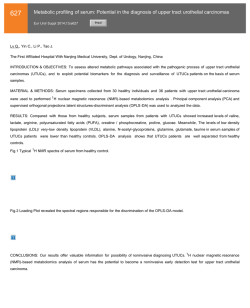
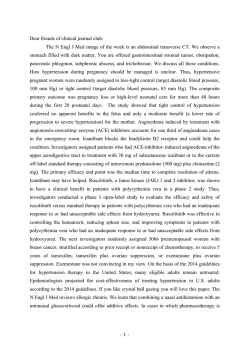
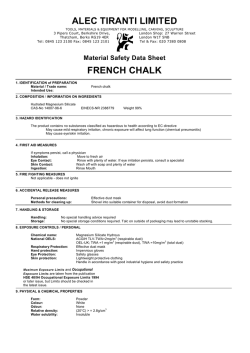

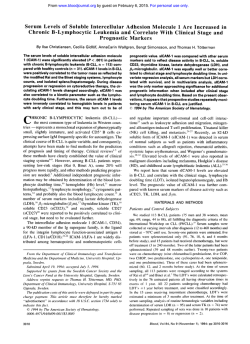
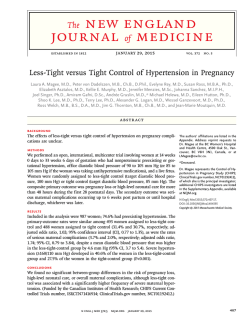
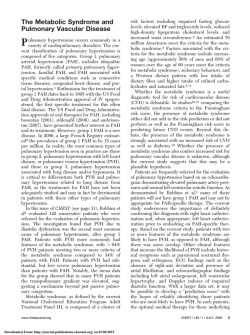
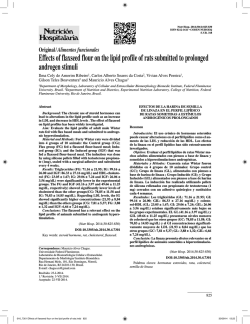
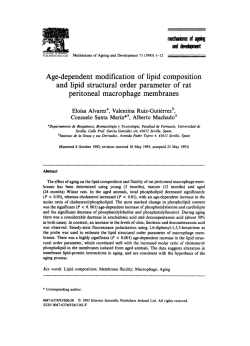
![Download [ PDF ] - journal of evolution of medical and dental sciences](http://s2.esdocs.com/store/data/000475167_1-3fd66abd823a299e32f0bb1f6c6f6a60-250x500.png)
